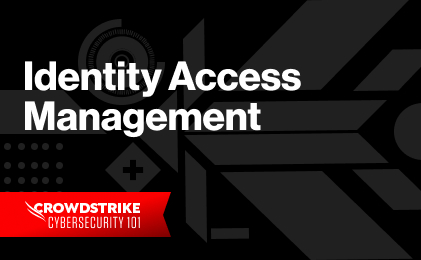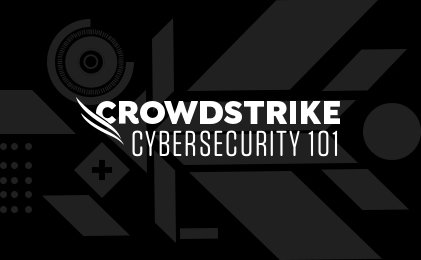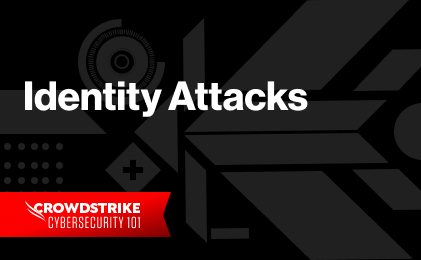What Is Privileged Access Management (PAM)?
Cybercriminals are always looking for an entry point into an organization, and privileged users offer attractive targets since their credentials give bad actors the proverbial “keys to the kingdom.” Gaining access to privileged accounts opens avenues for attackers to navigate an organization’s IT landscape and jump from system to system, accessing and exfiltrating critical information.
In fact, according to CrowdStrike research, 80% of data breaches stem from stolen or compromised credentials.1 Consequently, privileged access management (PAM) is a pivotal facet of an organization’s cybersecurity. Let’s dive in and explore the benefits of PAM and how businesses can effectively implement it.

2024 CrowdStrike Global Threat Report
The 2024 Global Threat Report unveils an alarming rise in covert activity and a cyber threat landscape dominated by stealth. Data theft, cloud breaches, and malware-free attacks are on the rise. Read about how adversaries continue to adapt despite advancements in detection technology.
Download NowPrivileged access management defined
Privileged access management helps organizations manage and secure access to their most critical systems, applications, and data, which are typically reserved for privileged accounts. Privileged accounts have elevated permissions and capabilities, allowing these users to perform various administrative tasks, access sensitive information, and make changes that typical users cannot.
PAM works through a combination of people, processes, and technology that enables organizations to safeguard their critical assets by enforcing strict controls on who can access privileged accounts and how they can use them. As a result, organizations can minimize the risk of unauthorized access to sensitive systems and data by providing a robust approach to managing privileged accounts and ensuring that only authorized individuals can use them.
Benefits of adopting PAM
Privileged access management is crucial for implementing Zero Trust and defense-in-depth strategies and helps organizations protect their valuable assets. By adopting PAM, organizations can experience many advantages, including:
- Enhanced visibility
PAM gives you real-time insights into who has accessed your network, server, app, and devices so you can keep a watchful eye on who’s trying to access unauthorized areas. Additionally, PAM allows you to set up alerts and get notified about suspicious activity. It’s like having your own personal detective to help you stay one step ahead of potential insider attacks. - Increased productivity
Most PAM solutions leverage automation to perform tasks that have traditionally been handled manually, such as generating passwords and managing password vaults. With PAM automating these functions, IT and security teams can experience valuable time and resource savings. - Improved compliance
PAM helps regulated industries like those in healthcare and finance adhere to compliance requirements for managing account access and adopting least privilege access principles. By using privileged access management, you can reduce your risk in an audit and more easily prove compliance. - Reduced malware spread
Malware attacks are often initiated by attackers who acquire access through privileged accounts, such as admin profiles, enabling the malicious payload to spread much more rapidly due to the broad access the privileged account provides. By securely restricting and controlling user access to just business necessities, you can significantly curtail an attack’s ability to propagate. - Increased accountability
PAM promotes accountability by attributing actions to specific individuals with privileged access, making it easier to investigate and address security incidents.
PAM risks and challenges
PAM is a crucial security practice that provides organizations with extensive benefits, but it can come with some of the following challenges and potential risks:
- Complexity
Some PAM solutions are complex to deploy and manage, requiring careful planning and integration with existing systems. When searching for a solution, you should evaluate the product’s usability and ease of integration to ensure it won’t overly burden your team’s resources. - User resistance
Users with privileged access might resist the implementation of a PAM solution due to changes in their workflows and additional security measures. Educating your privileged users on the value of your PAM practice and how it will improve your company’s security posture will help them get on board and support any required process changes. - Misconfigurations
Improperly configured PAM systems could lead to disruptions in critical processes or inadvertent privilege escalations. Misconfigurations may occur because of a misunderstanding of proper settings or conflicting settings, so it’s good practice to limit the number of administrators for your PAM solution. - Single point of failure
If the PAM system itself is compromised, it could lead to severe consequences, granting attackers access to all privileged accounts. This makes it crucial to assess the security practices of your PAM vendor to minimize potential risks and vulnerabilities. - Operational overhead
PAM can add administrative overhead in managing and granting access to privileged accounts for legitimate users.
How PAM works
Privileged access management works by enforcing security procedures and controls that limit and monitor privileged account access. It consists of secure authentication, authorization, and auditing techniques that help ensure only authorized individuals have access to sensitive systems and data. In addition, PAM technologies support session monitoring and recording, which enable your IT and security teams to watch and analyze privileged user behaviors.
PAM is grounded in the principle of least privilege, which ensures that users are granted only the essential access levels necessary for their job responsibilities. This principle is widely recognized as a cybersecurity best practice and serves as a crucial measure for safeguarding privileged access to your valuable data and resources.
What are privileges?
Privileges refer to the elevated permissions and capabilities granted to users, applications, or processes within an information system. These permissions allow users or processes to access and perform specific actions on critical resources, such as files, directories, databases, network configurations, or administrative settings.
Examples of privileges include read, write, execute, modify, delete, create, and administrative rights. Privileges are essential for system administration and management tasks but can pose security risks if not properly managed.
What are privileged accounts?
Privileged accounts are user accounts or service accounts that have elevated permissions beyond those of regular user accounts. These accounts have administrative privileges and can perform critical actions like installing software, modifying system settings, accessing sensitive data, and managing user accounts.
Privileged accounts are often targeted by attackers because compromising them provides extensive control over an organization’s systems and data. Therefore, controlling and securing privileged accounts are crucial aspects of PAM. Some examples of privileged accounts include:
- Administrator rights
Users with administrator privileges have the authority to configure, manage, and modify system settings, software installations, and user accounts. - Root access
In Unix-like operating systems, “root” is the superuser account that has unrestricted access to all system resources and files. - Database administrator (DBA) access
DBAs manage and control databases, including creating, altering, and deleting database structures and data. - Application-level privileges
Some applications require higher privileges to perform certain tasks, like accessing sensitive data or performing system-level operations. - Network configuration privileges
Users with these privileges can configure network settings, routers, firewalls, and other network-related configurations. - Encryption key management
These users can manage and control encryption keys that secure an organization’s sensitive data. - Physical access control
Privileges might also extend to physical access, allowing certain individuals to enter secure areas (like a data center facility) or interact with hardware components. - Financial systems access
Typically employees in your finance and accounting departments, these users can access your financial software and systems to process transactions and perform their job functions. - Cloud infrastructure management
Cloud administrators have privileges to manage cloud resources, virtual machines, storage, and networking components within cloud environments. - Development and production environments
Developers might have different levels of access in development and production environments, allowing them to create, test, and deploy software.
What are privileged credentials?
Privileged credentials are the authentication information associated with privileged accounts. They include usernames, passwords, API keys, cryptographic keys, certificates, and any other credentials required to access and operate privileged accounts.
Proper management and protection of privileged credentials are vital to prevent unauthorized access and ensure that only your authorized staff can use them when necessary.
Common privilege threat vectors
Attackers use various methods to exploit privileged accounts, elevate their privileges, and gain unauthorized access to sensitive systems and data. Some common privilege threat vectors include:
-
- Password attacks
Brute force attacks, password guessing, or stealing credentials to gain access to privileged accounts. - Privilege escalation
Exploiting vulnerabilities or misconfigurations to escalate privileges from a regular user to a privileged account. - Credential theft
Stealing privileged credentials through phishing, social engineering, or malware. - Malicious insiders
Employees or contractors with authorized access who intentionally misuse privileges for personal gain or harm. - Impersonation
Attackers use a variety of social engineering methods to impersonate authorized personnel to gain access to privileged accounts or systems. - Privilege creep
When users accumulate more privileges than they need over time — either due to changes in their roles or neglecting to remove unnecessary permissions — it increases the organization’s attack surface. - Unauthorized access
Attackers with physical access to systems or devices can directly manipulate privileged accounts.
- Password attacks
Learn More
How a Strong Identity Protection Strategy Can Accelerate Your Cyber Insurance Initiatives
PAM implementation and best practices
The more mature and holistic your privilege security policies and enforcement are, the better your ability to prevent and react to insider and external threats while meeting compliance mandates will be. Here are some of the most important PAM best practices:
- Conduct a comprehensive assessment
As a starting point, it’s important to conduct a thorough assessment of privileged accounts and credentials across your organization to identify who has access to what and identify any potential risks that should be addressed.
- Implement the principle of least privilege
Adhere to the principle of least privilege, where each user is given the minimum levels of access or permissions needed to perform their job. - Adopt secure vaulting
Utilize a secure vault to store and manage privileged credentials, encrypting them to prevent unauthorized access. - Employ a just-in-time (JIT) privilege practice
Implement a JIT privilege process where you grant temporary access to privileged accounts for a limited time when a user has a justifiable need. - Use multi-factor authentication (MFA)
Enforce MFA for all privileged accounts to add an extra layer of security. - Conduct session monitoring and recording
Regularly monitor privileged account sessions for suspicious activity and record them for audit purposes. - Use role-based access control (RBAC)
Implement role-based access control to restrict network access based on the roles of individual users within your organization. - Conduct regular reviews and audits
Regularly review privileged access and conduct audits to ensure compliance and identify potential security issues. - Provide user training
Educate your employees on the importance of PAM, best practices, and how to recognize and report potential security threats like phishing emails. - Continuously improve
Remember that PAM is an ongoing process that requires regular updates, assessments, and adjustments as your organization’s needs and security landscape evolve, so you should continuously review and update your PAM policies and technologies.
PAM vs. other types of privileged management
While PAM is the overarching strategy that encompasses various aspects of managing and securing privileged access, there are subsets of PAM — privileged identity management (PIM), privileged user management (PUM), and privileged session management (PSM) — that focus on specific dimensions of privileged management. Let’s clarify the differences.
Privileged Identity Management
PIM is a subset of PAM that focuses specifically on managing privileged identities within the organization, such as user accounts with elevated permissions. PIM helps maintain a centralized view of privileged identities, enforce proper access controls, and reduce the risk of excessive privileges.
Privileged User Management
PUM is another term that is sometimes used interchangeably with PAM. PUM focuses on managing and securing the activities of privileged users, including monitoring their actions, enforcing policies, and ensuring compliance. PUM helps organizations maintain accountability, detect insider threats, and ensure proper adherence to security policies
PAM, on the other hand, encompasses a broader range of activities, including managing privileged users, controlling access to privileged accounts, securing credentials, and implementing various security measures to protect against privilege misuse.
Privileged Session Management
PSM is a subset of PAM that focuses specifically on managing and monitoring privileged sessions. PSM enhances security by ensuring that remote access is tightly controlled and audited, reducing the risk of unauthorized access.
Safeguarding privileged access with CrowdStrike
For adversaries, stolen credentials grant swift access and control — an instant gateway to a breach.
With CrowdStrike, you gain unparalleled visibility, detection, and cross-domain correlation capabilities to protect your business from all types of identity-based attacks and mitigate the risks of a data breach.
CrowdStrike Falcon® Identity Threat Protection gives you deep visibility into the scope and the impact of access privileges for your user identities across Microsoft Active Directory (AD) and Azure AD. With Falcon Identity Threat Protection, you gain granular and continuous insights into every account and activity to highlight security gaps across identity stores and empower your IT and security teams to better evaluate identities and the risks associated with them.


